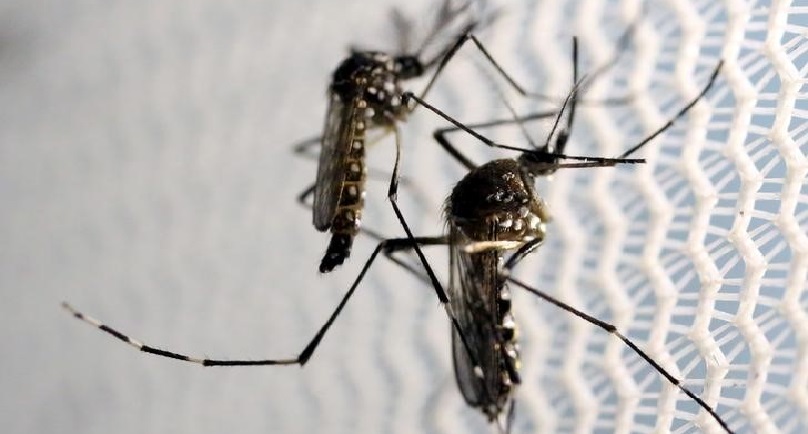Image:Aedes aegypti mosquitoes are seen inside Oxitec laboratory in Campinas, Brazil, February 2, 2016. REUTERS/Paulo Whitaker/File Photo
By Julie Steenhuysen
CHICAGO (Reuters) – Zika infections in Puerto Rico appear to be increasing rapidly, top U.S. health officials said on Friday, raising concerns for dozens if not hundreds of cases of microcephaly.
Puerto Rican health officials on Friday reported that 1,726 people in the U.S. commonwealth have been infected with Zika, including a total of 191 pregnant women. That is up from a total of 1,501 total infections and 182 infections in pregnant women a week ago.
The numbers reflect the total number of confirmed Zika cases since the start of the outbreak late last year, a number that reflects largely symptomatic cases of Zika.
In new data released by the U.S. Centers for Disease Control and Prevention on Friday, health officials have also seen a sharp rise in the frequency in which Zika is detected in blood donations.
The numbers are based on the use of a test from Swiss drugmaker Roche Holding AG in use since April 3 to screen blood donations for Zika.
“This is a test that measures actual Zika virus in the blood. It’s highly sensitive and highly specific,” CDC Director Dr. Thomas Frieden told reporters in a conference call on Friday.
As of April 3, 68 out of 12,777 blood donations have tested positive for Zika, and the proportion of positive tests “has steadily increased,” Frieden said.
Testing in the most recent week ended June 11 showed 1.1 percent of donated blood was infected with Zika, the highest proportion seen yet in Puerto Rico, Frieden said.
Although the blood donor population is not representative of the general population, Frieden said the increasing prevalence of Zika in blood donations likely reflects increases in the population at large.
The Zika virus only remains present in the blood for about a week after symptoms appear, and diagnostic tests also look for signs of past infections. Frieden said analyzing Zika in blood donations provides a snapshot of current infections in the population at any given time, including asymptomatic cases.
Based on the findings, he estimates that as many as 2 percent of the population is infected with Zika each month.
The estimate suggests that over time, there is a substantially higher risk that a pregnant woman would become infected with Zika, putting her fetus at risk of birth defects.
That also means that in the coming months, “it’s possible that thousands of pregnant women in Puerto Rico could be infected in with Zika,” Frieden said, leading to “dozens or hundreds of infants being born with microcephaly in the coming year.”
“The bottom line is we’re seeing a steady increase,” Frieden said.
He stressed that pregnant women are the chief priority in the fight against Zika. The virus has been shown to cause microcephaly, a birth defect marked by small head size and underdeveloped brains, as well as other malformations. It is yet not clear whether babies exposed to Zika in the womb with no obvious birth defects will have developmental issues later on.
In Brazil, authorities have confirmed more than 1,400 cases of microcephaly in babies whose mothers were exposed to Zika during pregnancy
Frieden said the test was highly sensitive, and all blood donations that test positive are removed from the blood supply. Donors who test positive for Zika, an infection that often has no symptoms, are given information on how to avoid spreading the infection to others.
Although Zika is largely a mosquito-borne virus, it can be transmitted sexually and through blood donations.
Frieden said there have been no confirmed cases of Zika spread through blood transfusions anywhere in the United States or Puerto Rico or any other U.S. territory, although there has been at least one report of Zika spreading through a blood transfusion in Brazil.
The Obama administration has requested $1.9 billion in emergency Zika funding. The Senate approved $1.1 billion of that request, but the House of Representatives voted to allocate $622.1 million financed through cuts to existing programs, such as for Ebola, which U.S. health officials have called inadequate and short-sighted.
(Reporting by Julie Steenhuysen, editing by G Crosse)
Copyright 2016 Thomson Reuters. Click for Restrictions.


